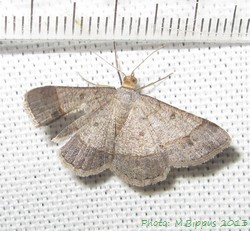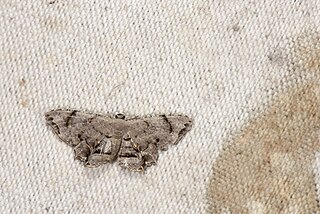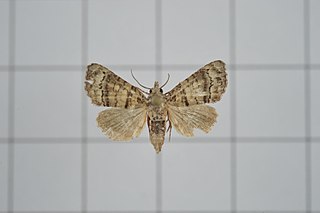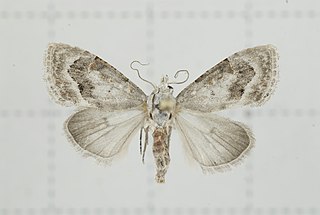
Epiplema is a genus of moths in the family Uraniidae described by Gottlieb August Wilhelm Herrich-Schäffer in 1855. A number of species have been reassigned to Europlema.

Chiasmia normata is a moth in the family Geometridae first described by Francis Walker in 1861. It is found throughout of subtropical Africa and Asia, from India, Japan, Taiwan, Sri Lanka. to the Philippines and in Australia.

Dysaethria fulvihamata is a moth of the family Uraniidae first described by George Hampson in. It is found in Sri Lanka, Taiwan, Hong Kong, the Ryukyu Islands and Borneo.

Dysaethria obscuraria is a moth of the family Uraniidae first described by Frederic Moore in 1887. It is found in India, Sri Lanka and Taiwan.
Dysaethria rhagavata is a moth of the family Uraniidae first described by Francis Walker in 1861. It is found in Sri Lanka.
Dysaethria scopocera is a moth of the family Uraniidae first described by George Hampson in 1896. It is found in Sri Lanka, Taiwan, Malaysia and Borneo.
Epiplema irrorata is a moth of the family Uraniidae first described by Frederic Moore in 1887. It is found in India and Sri Lanka.
Epiplema latifasciata is a moth of the family Uraniidae first described by Frederic Moore in 1887. It is found in India and Sri Lanka.
Epiplema quadristrigata is a moth of the family Uraniidae first described by Francis Walker in 1866. It is found in Australia and Sri Lanka.

Pseudomicronia advocataria is a moth of the family Uraniidae first described by Francis Walker in 1861. It is found in the Philippines, Sundaland, the Andaman Islands, India, Taiwan, South China and Sri Lanka.

Phazaca erosioides is a moth of the family Uraniidae first described by Francis Walker in 1863. It is found in the Indo-Australian tropics from Sri Lanka to New Guinea.
Stictoptera trajiciens is a moth of the family Euteliidae first described by Francis Walker in 1857. It is found in Oriental tropics of Sri Lanka, to Sundaland, the Philippines, Sulawesi and New Guinea.

Avitta quadrilinea is a moth of the family Noctuidae first described by Francis Walker in 1863. It is found in Borneo, Peninsular Malaysia, Thailand, the Indian subregion, the Philippines, Sulawesi and Sri Lanka.

Anigraea cinctipalpis is a moth of the family Noctuidae first described by Francis Walker in 1865. It is found in Indian subregion, Sri Lanka, Malaysia, Borneo, Philippines, New Guinea and Australia.

Chlumetia transversa, the mango shoot borer, is a moth of the family Euteliidae. The species was first described by Francis Walker in 1863. It is a widely distributed across Indo-Australian tropical countries far east to Solomon Islands.

Maceda mansueta is a moth of the family Nolidae first described by Francis Walker in 1857. It is found in Japan, Sri Lanka, Borneo, India (Andamans), Malaysia, New Guinea, Fiji, Australia, Réunion and the Seychelles.

Maurilia iconica is a moth of the family Nolidae first described by Francis Walker in 1857. It is found in Indo-Australian tropics of Sri Lanka, Australia to the islands of Samoa, Rarotonga and New Caledonia.

Paracrama dulcissima is a moth of the family Nolidae first described by Francis Walker in 1864. It is found in Indo-Australian tropics of India, Sri Lanka and the Bismarck Islands.

Nola fasciata is a moth of the family Nolidae first described by Francis Walker in 1866. It is found in Indo-Australian tropics of India, Sri Lanka to Borneo, Taiwan, New Guinea and Australia.











